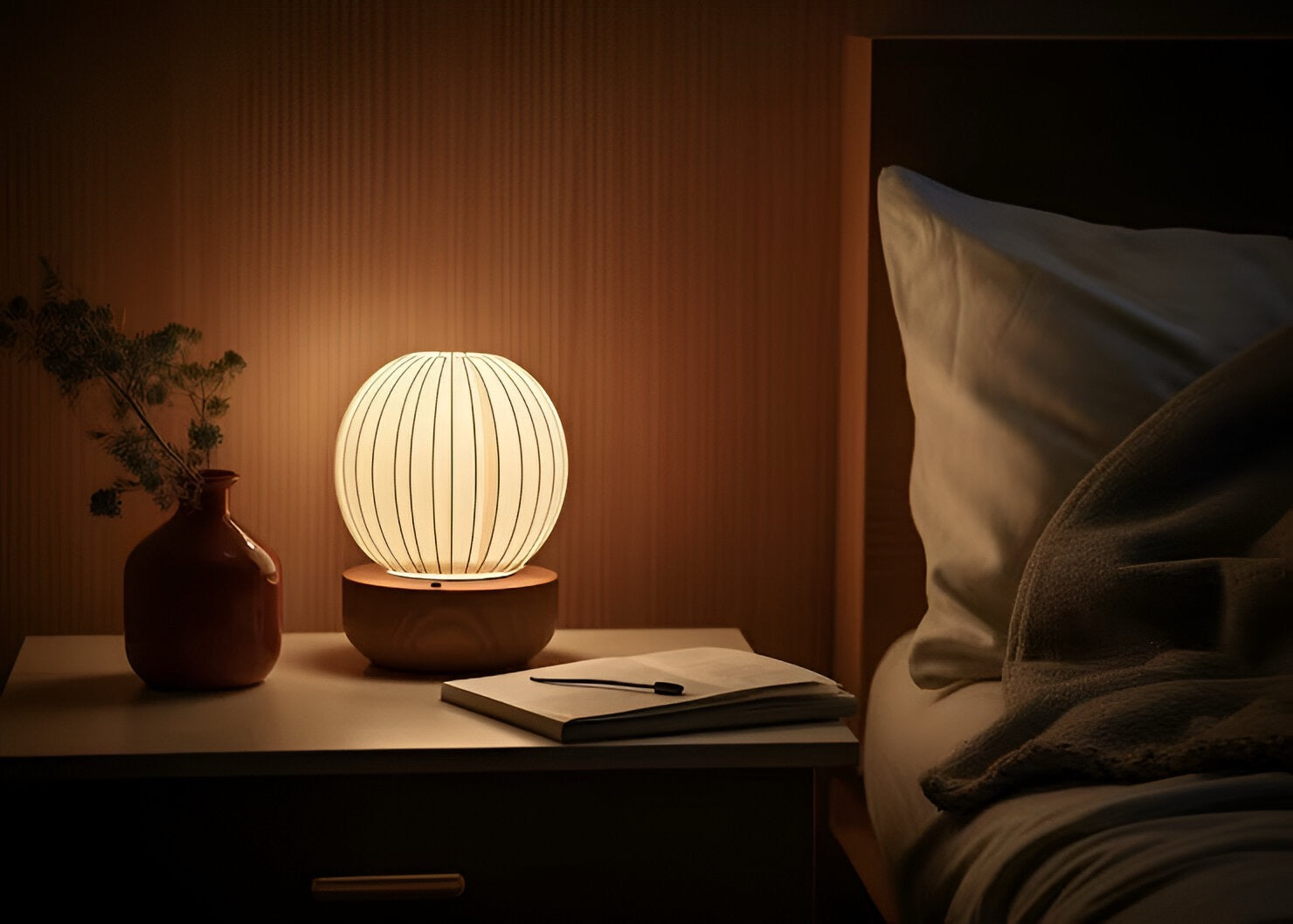


It's three o'clock in the morning. You wake up, have to get out for a moment and blink through the darkness. Your first instinct? Turn on the light. And at that moment it happens: a bright, cold beam of light from the hallway or bathroom hits your eyes like a blow. You are immediately wide awake. It's almost impossible to fall back asleep quickly. Does this sound familiar?
We often think of nightlights as something for children who are afraid of the dark. But the truth is: as adults, we may need them even more urgently - but for a completely different reason. It's not about fear of monsters, but protection from an invisible enemy of our sleep: blue light. The ironic result is that most "solutions" to darkness, from glaring bathroom lights to glowing cell phone screens, sabotage our sleep more than darkness itself. This guide explains why this is the case and how the right night light can not only help you get through the night more safely, but actively improve your sleep.
To understand the problem, we need to take a brief look at our internal clock, the so-called circadian rhythm. This 24-hour cycle controls countless processes in our body, first and foremost the sleep-wake rhythm. The most important clock generator is light.
Our brain has been programmed for this for thousands of years: Bright, bluish light (like that of the midday sky) means "day, be awake, become active!". Darkness and warm, reddish light (like a sunset or campfire) mean "night, come to rest, sleep".
When our eyes encounter blue light, they send a strong signal to our brain to immediately stop the production of the sleep hormone melatonin. Melatonin is the hormone that makes us tired and sleepy. Without it, we cannot fall asleep well or sleep through the night. And this is precisely the problem with modern light sources: Most standard LEDs, energy-saving light bulbs and, above all, the screens of our cell phones, tablets and televisions emit an enormously high proportion of blue light.
So when you get up at night and turn on the normal hallway light or - even worse - take a quick look at your cell phone, you're basically telling your brain, "Watch out, it's noon! Wake up!" Melatonin production breaks down and your body switches from sleep to wake mode. The train has left the station.
Although complete darkness is ideal for sleeping, it is often impractical in everyday life and unsafe for many people. Who wants to trip over the cat or miss the door frame? The solution is an orientation light that is bright enough to help you find your way safely, but whose light spectrum does not interfere with melatonin production. A night light without any significant blue light component.
This "sleep-friendly" light does not send a "wake up!" signal to the brain. It allows you to get your bearings while your body remains in sleep mode. This makes the transition back to bed and deep sleep effortless.
A good night light is therefore much more than just a weak lamp. It is a precise instrument. Here are the three key criteria you need to pay attention to.
This is the most important point. Forget the cold, white or even blue night lights from the DIY store. You are looking for light in the long-wave spectrum.
The aim is orientation, not illumination. A good night light should be just bright enough for you to recognize the outlines of furniture and doors. Brightness is measured in lumens (lm). For a night light, values between 1 and 10 lumens are usually perfectly adequate. Anything brighter can be too stimulating, even if the light color is right.
A night light that burns all night is usually unnecessary. Intelligent control systems not only save electricity, but also ensure that the light is only on when you need it.
Positioning is also crucial to minimize the disruptive effect.
A sleep-friendly night light is an important component, but for maximum success you should see it as part of a larger strategy to reduce blue light in the evening.
A good night light for adults is not a gimmick. It is an effective tool for improving your sleep hygiene. It is a conscious decision to give your body the right signals at the right time. By banishing the invisible sleep robber - blue light - from your night-time environment, you create the ideal conditions for quickly and effortlessly finding your way back to restful sleep after a brief interruption.
Investing in one or two thoughtful amber or red night lights with motion detectors is one of the easiest and most effective changes you can make for your health and well-being. It's about taking back control and making the night what it should be: a time of undisturbed rest and regeneration.

As the founder of BUYnBLUE and Lumoir Jewelry, I share my passion for unique designs and current trends. My goal is to inspire you and help you find the right designer pieces that emphasize your personality and bring you joy for a long time.